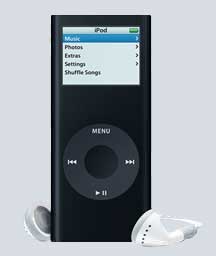Hi-tech how tos
Lynn Turner, hosts and produces Business Link Radio turner.lynn@charter.net
Gail Sterner, owns Five Star Professional Services, an Internet solutions and strategy company based in Palmer, Mass. gail@5starpro.com
Blogging, Podcasting and Email marketing
Blogging. Podcasting. Terms that sound like they're right out of a futurist, sci-fi movie. But these, along with e-mail marketing strategies, are part of what could be referred to as the "new frontier of the Internet," enabling the average individual to post and promote information online using a variety of media.
Traditionally, the Internet has been dominated by tech-savvy professionals who understood the specific programming codes and language for creating Web sites and posting information online. That has changed. New products and methodologies can enable anyone to post information on-line in an easy-to-use format similar to familiar programs like Microsoft Word.
Blogs
Blogging is part of this new frontier of the Internet. A blog, short for weblog, is an on line journal that is frequently updated and intended for general public consumption. Blogs provide "bite-size nuggets" of information with a "read more" option. They are non-linear with links throughout and can be conversational; creating a two way communication process engaging the audience to comment and join in the dialogue. Initially, blogs were more for personal use bloggers shared information with family and friends. But blogging has exploded. According to a survey conducted in 2004 by PewInternet.org a non-profit research group that looks at the effect of the Intenet on all aspects of American work and life blog readership was up by 58 percent with six million Americans getting their news through blogs.
For businesses, blogs provide a low-cost (and in some cases, no cost) way to deliver timely information to customers, prospects, stakeholders and staff in an efficient manner. Among their many applications, blogs are effective for sales/marketing purposes such as introducing new products or services, as a customer service tool providing on-going support and even offering customers a way to participate with comments, questions and tips, and for the training of customers and/or staff on specific products, services, policies, etc.
Podcasts
The term podcasting combines iPod and broadcasting and refers to audio files on the Internet that can be downloaded for later listening on an iPod or MP3 player. Podcasts offer an alternate way to get online information in an off line environment; such as while driving, at the gym or taking a walk. Podcasts can be set up online in such a way that they are automatically downloaded to a computer for transfer to an iPod or MP3 player. Currently, 22 million Americans own an iPod or MP3 player and 29 percent have downloaded a podcast or audio file. While podcasts were initially used for downloading music, they have become a platform for talk radio, religious programs and news. A great means for communicating information, podcasts can be extremely powerful when combined with blogs. The blog can act as the teaser with the podcast providing more detailed information.
E-Mail Marketing
E-mail marketing strategies can be a cost-effective tactic for small to mid-size businesses because they provide an opportunity to compete on a level playing field with larger corporations. Discounting the initial set up fees, e-mail campaigns, such as event announcements, special offers, downloadable coupons, etc., are a fraction of the cost of direct mail and five times more effective. For example, the normal turn-around of a traditional direct mail campaign from conception to delivery, ranges between 15 to 20 days for design, printing, mailing and delivery/receipt. Compare this to the just-in-time strategy of an e-mail campaign which can be done within 24-48 hours. E-mail marketing provides a quick and effective way to increase revenue. According to ConstantContact.com, an email marketing service, 85 percent of the time, a response will be received within 48 hours of the e-mail being sent and 15 percent of Internet sales come from e-mail. The immediacy of e-mail strategies can assist companies experiencing a lull in business. E-mail is even more effective for touching and keeping customers. E-newsletters can be effective by helping to encourage customer loyalty and enhance the customer relationship.
Caveats
While e-mail marketing campaigns can be quite effective on many levels, there are some caveats to consider before sending your message.
- Be well versed in the Federal Trade Commission's regulations on SPAM, non-permission based e-mail.
- E-mails must have an opt-out option, deleting those recipients who elect to opt-out within ten days. Advertisements must be clearly marked and a real physical address must appear on all e-mails.
- Make messages clear and easy to read. Provide valuable information, special offers, etc.
- While e-mail lists can be purchased, you can create your own from business cards you have collected and individuals you have met at various functions.
Don't be left behind. Become a pioneer in the new frontier of the Internet. Blogging, podcasting and e-mail marketing help share your information quickly, easily and cost-effectively.
